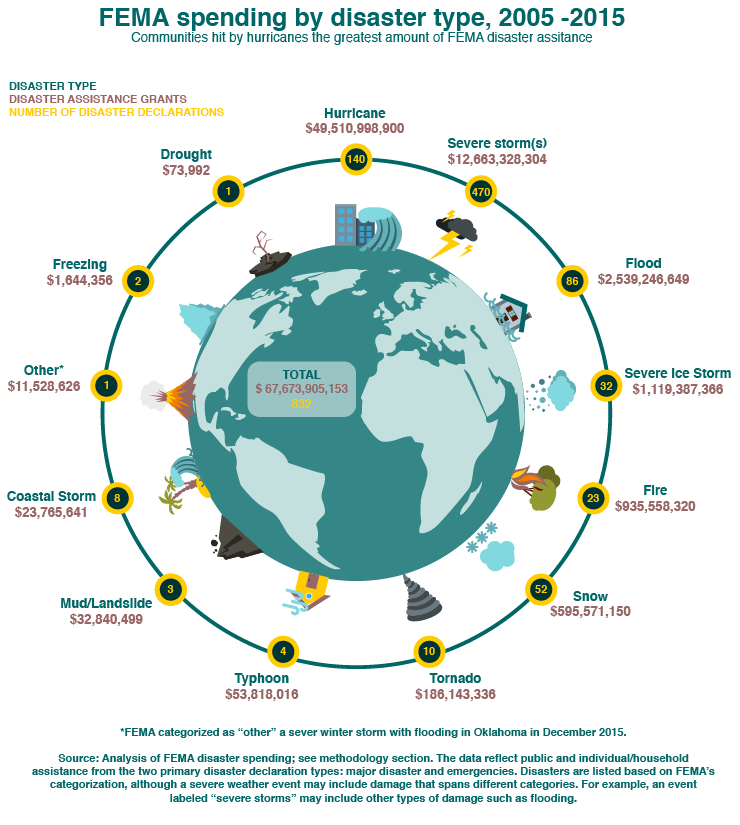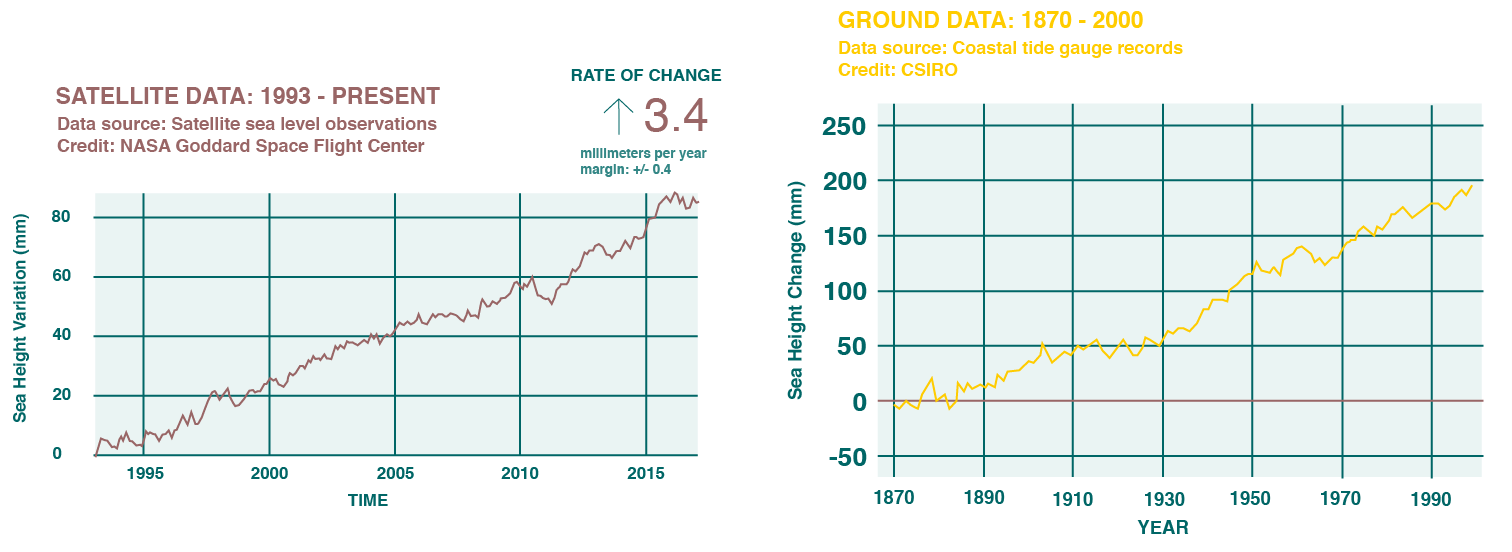Calculating the financial cost of climate change is no easy endeavor. While the impacts of rising temperatures on the foundations of the global economy are well documented, the financial implications remain to be fully understood.
The United Nations Intergovernmental Panel on Climate Change has calculated that helping nations cope with climate impacts will cost the world half a trillion dollars annually by 2050. According to the London School of Economics, climate change is expected to cut the value of the world’s financial assets by $24 trillion by 2050 in the worst-case scenario. The best-case scenario, if efforts are successfully made to build a greener economy, will lead to the loss of only $2.5 trillion. Despite the complexity in calculating these costs of climate change, there are three main factors that serve as catalysts:
.
Natural Disasters and Mass Migration
While no individual storm, tornado or flood can be specifically attributed to climate change, scientific consensus expects that extreme weather events, such as Hurricane Katrina and Typhoon Haiyan, will increase in severity and frequency across the world. The World Bank estimates that the real cost to the global economy from natural disasters is $520 billion per year and that they push 24 million people into poverty annually. The cost of climate and weather-related disasters in the United States is an average $40 billion per year. The National Oceanic and Atmospheric Administration (NOAA) are responsible for calculating the cost of these disasters, from floods in South Carolina to wildfires in Alaska. There were 15 in 2016 that caused $46 billion in direct costs, and five so far in 2017 that have been costlier than $1 billion each.
There is no denying that the frequency of such events has increased over the last few decades. The1980s experienced an average of only 2.6 disasters every year that cost over $1 billion. The 1990s saw this frequency nearly double, with an average of 4.8 billion-dollar disasters each year. The average increased further in the 2000s with 5.4 per year, and there have been an average of 7.4 per year since 2010. The Federal Emergency Management Agency of the United States issued more than $67 billion in grants to people in need following extreme weather and wildfire disasters in the decade to 2015.
These extreme weather events often displace people from their homes, creating environmental refugees. The 2010 floods in Pakistan displaced 11 million people and Typhoon Haiyan in the Philippines displaced 4 million people in 2013. The United States saw its very first climate refugee in Newtok, Alaska that very same year. Such mass movements of people and social disruption not only incur heavy costs, but also often lead to civil unrest and conflict. These costs are extremely difficult to calculate due to sheer the diversity of government and international refugee programs. The Organization for Economic Co-operation and Development calculated that global refugee costs reached $6.6 billion in 2015, rising by 4.8% in the previous year.
That’s not even considering the impact of rising sea levels, which will be the biggest cause of human displacement seen in our history if temperature increases are not mitigated.
.
Infrastructure Development
Many of the world’s coastal cities, ranging from Ho Chi Minh City, Mumbai, New Orleans, Amsterdam and Shanghai, are all at severe risk from increasing water levels. Let’s take a look at Miami. If there were a three-foot rise in sea levels by 2050, the current scientific consensus resulting from a 2ºC increase in temperature, $145 billion in property assets and 300,000 homes would be lost forever. By 2100, this would impact nearly 20 million people that currently live in coastal areas in the United States, but up to 760 million people globally once average temperatures have increased by 4ºC.
Even meeting the emission goals pledged by countries under the United Nations Framework Convention on Climate Change (UNFCCC) would still leave the world 13.7 billion tons of CO2 – or 60% – above the level needed to remain on track for just 2ºC warming by 2035. These measures are expected to cost $4 trillion over the next 15 years, an increase of roughly 5% over the amount that would likely be spent anyway on new power plants, transit systems and other infrastructure.
.
Productivity Decline
Surprisingly, economic productivity is also heavily dependent on temperature. According to researchers at Stanford, economic productivity peaks at around 13ºC (55.4ºF), so as you deviate, either cooler or warmer, from 13ºC, productivity falls. According to the United Nations Development Program, climate change is expected to cause nearly $2 trillion in loss productivity by 2030. Business studies have agreed with these data, as Citigroup released a report stating that limiting temperature increases to 1.5ºC (2.7ºF) would save up to $50 trillion in global GDP loss.
Disruptions in daily life caused by climate change mean lost workdays, harmed trade, delayed agricultural production and inefficient energy production. According to the National Climate Assessment from the US Global Change Research Program, crops could produce up to 30% lower yields due simply to climate change, not to mention the decreased arable land available for agriculture if sea levels rise. Severe and inconsistent weather events also wreak havoc on planting and harvesting, cause power outages, increase traffic and delay air travel.
Regardless of whether you believe man-made global warming is real or not, we will all have to deal with the financial implications of climate mitigation and adaptation strategies in the long-term. With legislation being implemented on cutting carbon emissions and increasing environmental protection around the world, organizations and investors are seriously calculating how to reduce risk and increase returns in this changing climate. There’s no denying that the future of the global economy is green. Be part of the solution today.

